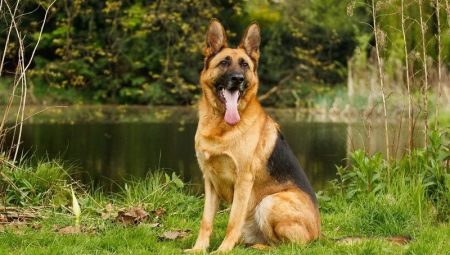The German Shepherd is one of the most popular dog breeds. Each owner should know everything about the representatives of this breed in order to understand their behavior, nature and foundations of proper education.
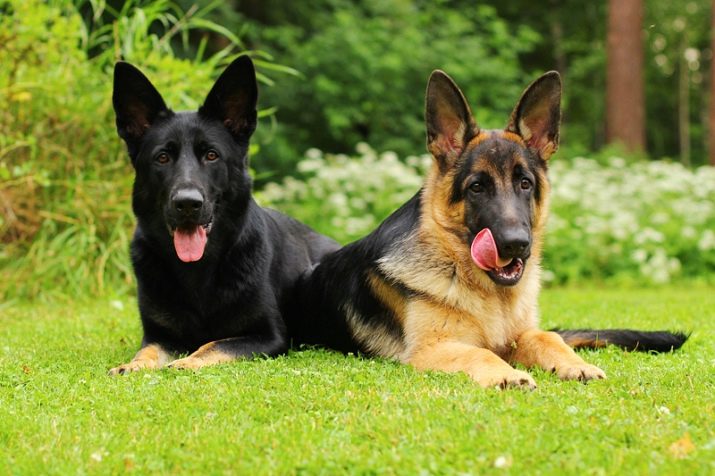
Breed description
The breed German Shepherd appeared in a very short time. It took about a hundred years for these dogs to become very popular.
The exact origin of this breed is unknown. Some suggest that the descendant of dogs was an Indian wolf, who lived in Western Europe several centuries ago. This animal subsequently produced a bronze dog. This is a beast in which the blood of domestic and wild individuals is mixed. The bronze dog lived in the fourth millennium BC.
Later shepherd dogs appeared, which were domesticated by humans. The breed was called Hovawart. It existed 2-4 centuries ago. Then dogs began to appear, which were called shepherd dogs. But these representatives did not look like a service breed, which is currently known.
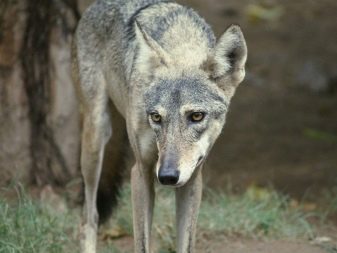
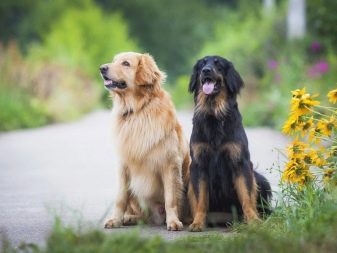
The history of the word “shepherd” is associated with the word “sheep”. Shepherd dogs were dogs that were involved in the protection of the shepherd. Schäferhund - Sheep dog or shepherd dog, translated as "dog that guards the herd." This suggests that the origin of the word was directly associated with the work of the canids. Germany used to have a large number of pastures on which flocks of sheep grazed. Someone called shepherd dogs a shepherd, and subsequently such a word took root.
In the XVII century, mention of such dogs was discovered.It said that according to the laws of the West Germanic tribe of the Alemans, punishment for killing shepherds was introduced. Since cattle breeding was actively developing in Germany in the 18th century, powerful dogs that could control the flock were needed to protect the herd. Shepherd dogs in those days were well appreciated, so there was a fashion for breeding breeds with working qualities. At that time, no one looked at the external characteristics, and the displayed dogs could be very different from each other.
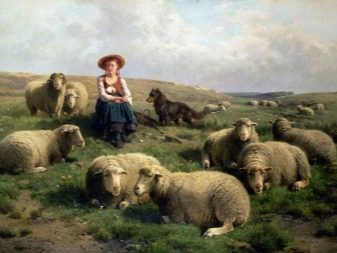
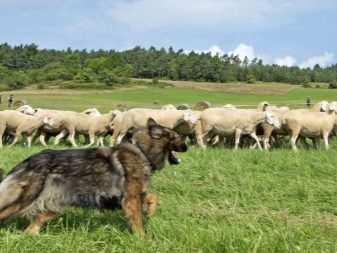
The breeding process was commercial in nature and was not accompanied by certain requirements in the standard. A little later, two kennels appeared, where shepherds were bred - Thuringia and Württemberg. These are the most famous kennels, but they were breeding dogs throughout Germany.
In these kennels, animals acquired their characteristic features. Thuringian individuals possessed the following qualities:
- medium height;
- wolf color;
- ring-shaped tail;
- sharp ears.
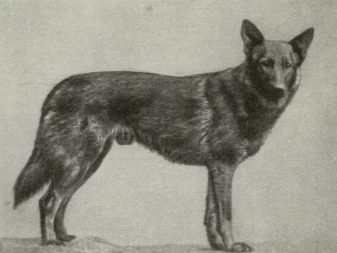
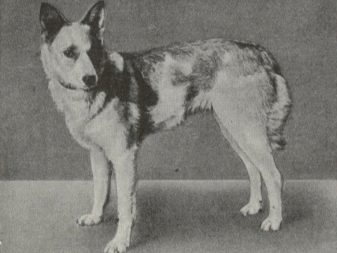
These shepherd dogs were more attractive than dogs from Württemberg, which were distinguished by a balanced disposition (the Thuringian ones were famous for their more lively character), large size, hanging ears and colored spots throughout the body. Although the animals differed from each other, people still crossed these individuals and added other breeds to them.
In 1882, shepherd dogs were first introduced as German. These were two dogs Cuirass and Greif, which had a light gray color. The animals gave rise to excitement for their people, so dog breeders began to think about breeding. Thanks to the Thuringian nursery, individuals appeared in the world who became the founders of the breed. Subsequently, the female Prima with the male Pollux, similar in color to the wolves, gave birth to puppies who began to participate in exhibitions.
In 1891, a community appeared where connoisseurs of "Germans" gathered. It existed for a short time, but managed to interest other people. In this association, the formation of the first standard of the German Shepherd occurred. Thanks to the work of one of the organizers of the community, which was engaged in breeding, the key developments of the breed were preserved.
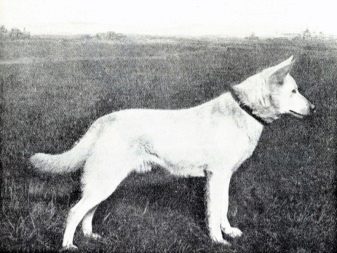
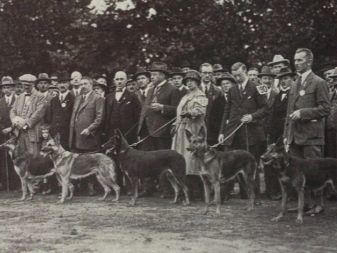
In 1899, the history of the German Shepherd began. At this moment, Max von Stefanitz (a retired officer) saw an individual that was able to capture all the positive features of the breed. The officer bought a male for himself and gave him the nickname Horand von Grafard. This dog began to be used for breeding in the main community of "Germans".
Max learned to be a veterinarian. From childhood he had been watching shepherd dogs who were watching the flocks of sheep. He wanted to create the perfect dog, which would become the best representative among the four-legged shepherds. When Max resigned, he started breeding and took his new job seriously. Thanks to him, an alliance of the owners of the "Germans" was formed. Max von Stefanitz is the first person who did not try to find the monetary gain from breeding a German shepherd.

The acquired male possessed unique characteristics in all respects, and its owner bred elite individuals. To get the result, he carefully selected females for breeding, traveled all over the country in order to find the necessary individuals and interacted with nurseries. A century later, his union will become the most impressive community in its category. A retired officer was able to develop standards that became benchmarks.
In the XIX century, the number of pastures began to decrease, and the need for shepherds subsided. Therefore, in 1901, Max began to promote the "Germans" in military units and civilian services. Dogs began to work in the police and army. This step received a response due to the fact that breeders worked out the temperament of animals.
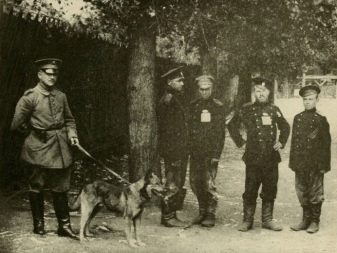

The union, created by a retired officer, helped the German Shepherd gain fame not only in Germany, but also in other countries. However, dogs were bought by different people who could interbreed individuals with defects, with an unstable character.
In 1925, the union held a conference according to which dog breeders decided to work on returning standards. Breeders selected show champions from different years, and the leader in terms of performance was the male Claude von Boxberg. He is the founder of key genetic branches. This dog has become a dividing strip between the approved standards that existed before and will be present in the future.
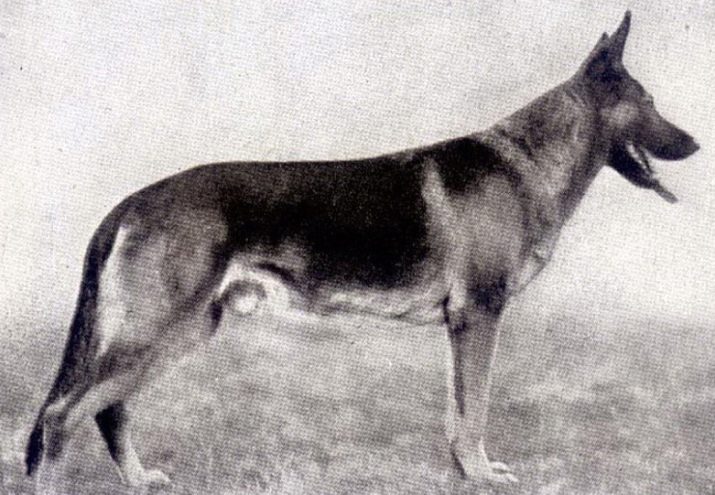
Appearance in Russia
In 1904, German shepherds were introduced to Russia. They were used as orderlies during the war between Russia and Japan. In 1908 this breed already participated in competitions between police dogs.
In 1924, there was an importation of a consignment of animals for the border service and the NKVD. This was not a good idea, since the project was introduced at the time when the dog breeding crisis came to the USSR. The lack of worthy dog breeders, along with poor representatives and uncontrolled crossbreeding prevented us from reaching the western standard in the breed.
In the post-war period, they decided to use the "Germans" for the Soviet Army. However, at that moment Germany was inaccessible to Russian dog handlers, and all the manipulations were carried out with dogs that remained after the retreat of German troops. Dog handlers were faced not only with low-quality samples, but also with the negative attitude of the Russian people to the word "German". The role of animals in punitive units also affected.
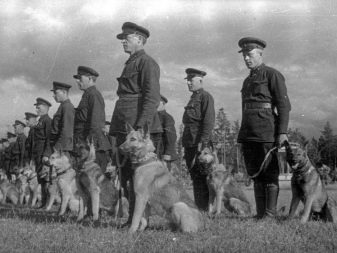
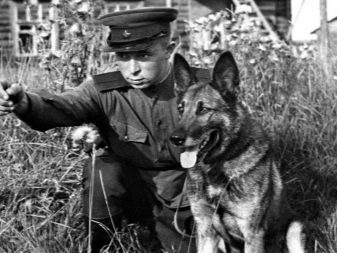
In 1946, the breed was named East European Shepherd. This decision was made so that there was no specific relation to the dog. Since business contact with German dog handlers was not possible, the breeds displayed were not similar to European standards. The adjustment of the standard occurred only in 1989.
In 1970, dogs began to come from Germany. In their appearance, they did not reach Western standards, but did not look so much like East European shepherds. In 1980, the cost of the "Germans" became lower, and Soviet canine specialists were able to bring new representatives into the country. With the help of tremendous work, dog handlers were able to get a breed of dogs, which is currently called the German Shepherd.
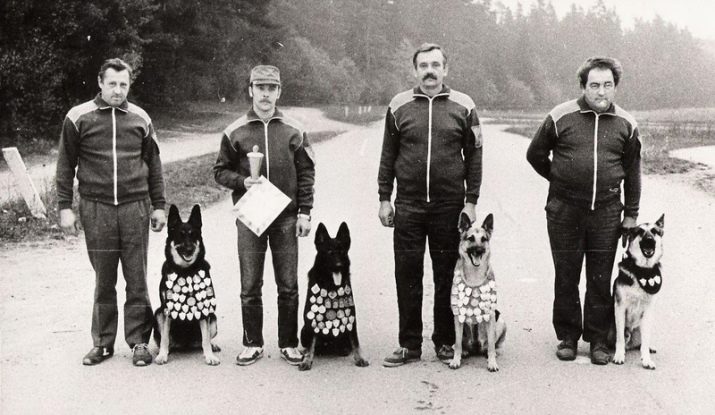
Advantages and disadvantages
The popular breed of dogs has many positive qualities, which should be familiar to every person who plans to get a similar animal.
Among the advantages are the following characteristics.
- High level of intelligence.
- Shepherd dogs are famous for their good susceptibility to training. They easily learn new exercises and can learn in almost all areas of training.
- Slowness along with unpretentiousness in relation to the conditions of detention. Animals quickly adapt to the new environment.
- Innate guard skills.
- Non-conflict. A dog of this breed will not causelessly show signs of aggression towards a stranger and is able to get along well with animals of other species.
- Universal performance.
- Energy, high level of endurance.
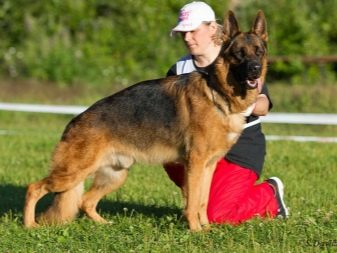
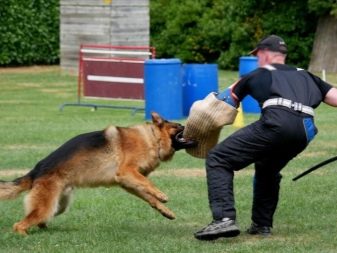
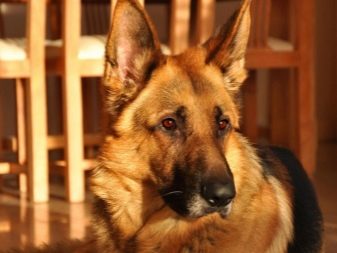

If a pet passes competent education, it will delight its owner with conflict-free behavior and balanced character, thanks to which he will become friendly not only to other dogs living with him under one roof, but also to cats. If the "German" is not in danger, he will never show aggression towards small breeds of dogs. However, in the opposite situation, the shepherd dog will show dedication, protecting itself and its relatives.
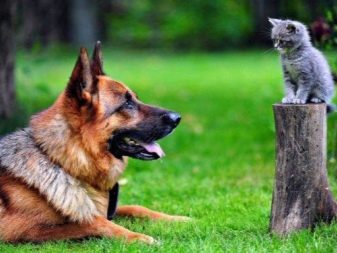
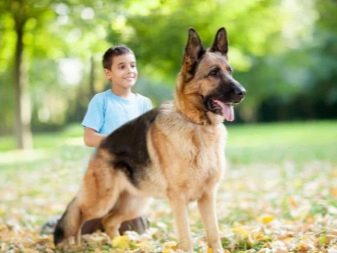
Among the shortcomings, the following features can be noted.
- High level of activity.
- German Shepherd constantly requires mental and physical stress. Also, the animal needs to walk daily.
- Training a dog will require training skills.
- The breed can be placed in the category of biting, if you neglect the rules of education and socialization of your four-legged friend.
- In a small apartment, keeping a shepherd will be problematic.
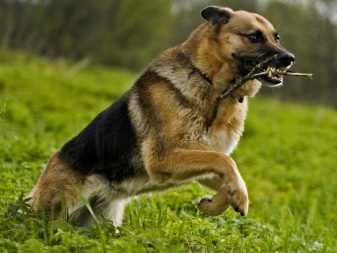
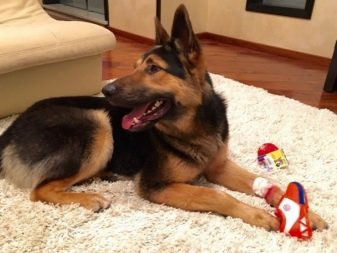
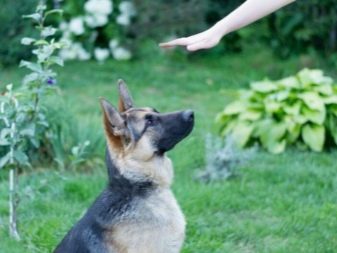
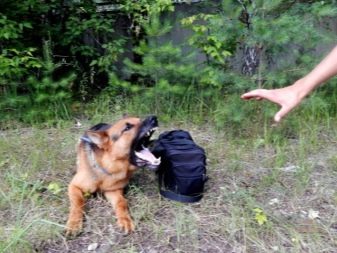
German shepherds are hypermobile animals that require open spaces along with long walks. Walking your pet, you should remember about the load. People who choose this breed should be ready to walk in any weather. For this reason, the "Germans" are advised to people with an active lifestyle. For busy people who have little free time, this breed of dog is not suitable.
"German" cannot live without load. A bored animal that does not receive enough mental stress will soon become uncontrollable and aggressive. A shepherd is not a dog who will sleep on the couch for most of his life. She needs to constantly do something and be involved.
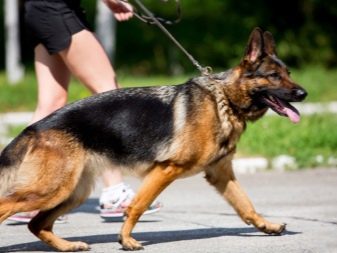
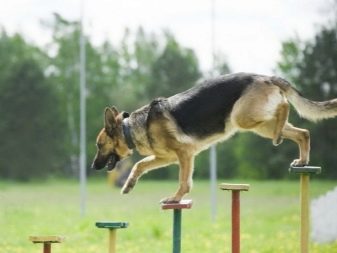
Therefore, it is important to understand that you need to deal with the animal, train it on an ongoing basis.
Such a dog is not suitable for an inexperienced dog breeder. She will need a strict, patient and competent approach. A four-legged friend often becomes stubborn, demonstrating a protest in following instructions. When puberty begins, if the owner could not socialize his pet and raise it, the animal can begin to demonstrate its superiority and try to take a leadership position. An obedient dog can become uncontrollable, which is fraught with danger not only for the owner himself, but also for those around him.
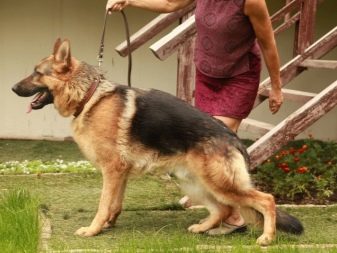
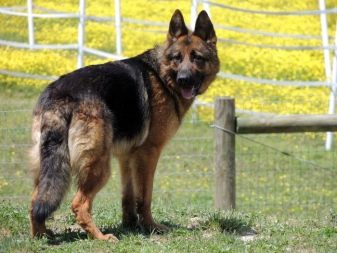
Since the dogs are active and too energetic, as well as large, they will not be suitable for keeping in a small apartment. This is a big dog that needs space. However, this does not mean that it should not be kept at home. If the living space allows, and the owner has time for long walks, German shepherd will feel good in the house. Ideal conditions for maintenance are a private house equipped with an aviary on the adjacent territory.
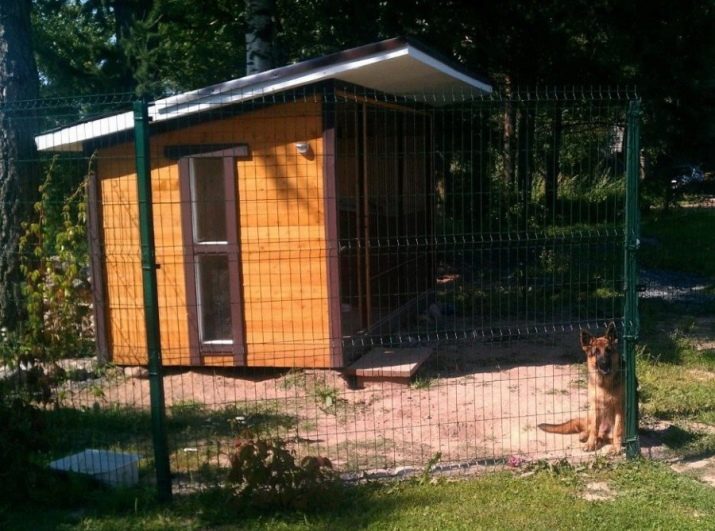
The positive and negative characteristics of the German Shepherd described above will help determine whether such a dog is suitable for a particular person. The advantages of the animal are much greater than the disadvantages and all the disadvantages are associated with the lifestyle of a person who does not fit the temperament of such a dog.
Varieties
There are several types of German shepherds, the difference between which is in the external characteristics and characteristics of temperament.
- The work line contains Belgian and Danish directions. However, this line does not include such breeds as the Belgian Malinois or the Danish Shepherd. These representatives were displayed for sports and official events. Representatives of the line are often used in the following areas:
- police;
- military service;
- search and rescue service;
- official investigation service.
This variety is suitable for people who need a working dog or a companion for sports. Despite the fact that such “Germans” do not seem to everyone elegant dogs, they have a good physique along with physical strength. Black, tricolor, black-brown and sable colors are provided. By their nature, dogs are characterized by increased aggression.
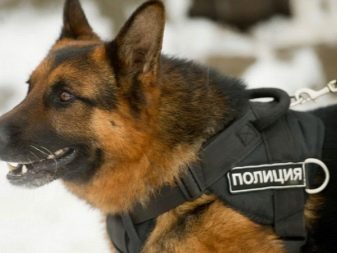
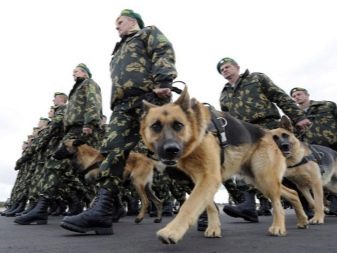
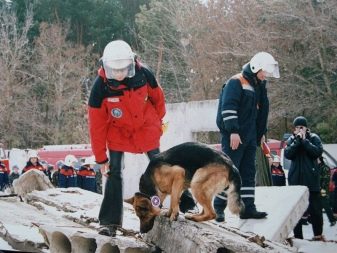
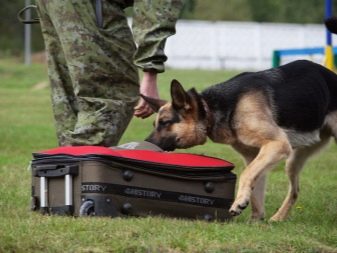
- East German line. This line was created on the basis of individuals that were in East Germany after the end of World War II. They are distinguished by good physique, a wide range of performance characteristics. It can be noted the presence of a heavy skeleton, a large head and a serious character. Some representatives of this line may differ in particular aggression.
Currently, there are dog breeders who are working to preserve the cleanliness of the "Easterners". But in most cases they are mixed with other working lines to get the most capable representatives of the breed.
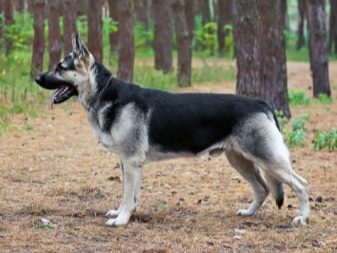
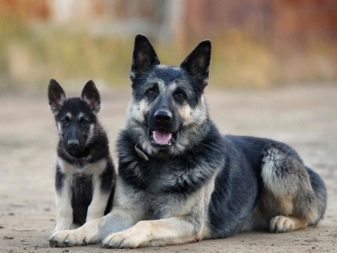
- Slovak or Czech. The line was developed in Czechoslovakia on the basis of working dogs. The ancestor of the direction is the East German line. Animals were bred for fast walking, so angular body shapes along with an elongated body can be noted.
Dogs are characterized by a milder temperament with changeable activity. It can be noted weak nervous system and health. Now dog breeders are trying to develop herding skills in this line, which will require agility and obedience.
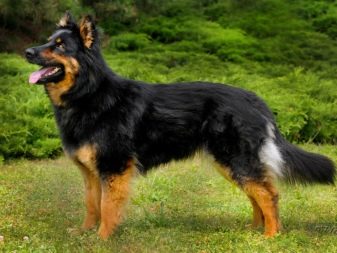

- English It originates from the old line, the representatives of which were exported to the islands of Britain until the moment when post-war German individuals appeared there. The dogs had a massive and heavy skeleton, the body was long, and the shoulders were beautiful. The nature of the individuals was distinguished by its softness and inconstancy.
Representatives of such a line were operated by the police, and were also used to guide people. But in the future, the breed was replaced by the German exhibition line.
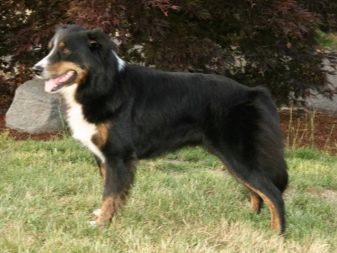
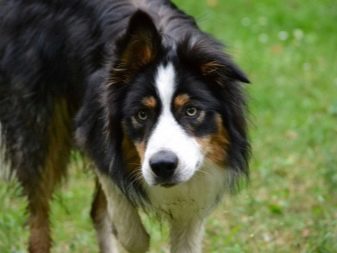
- White Swiss. White is considered the dominant hidden gene. If it manifests itself, such representatives are subject to disqualification in a number of countries. However, there were connoisseurs of white dogs who tried to achieve recognition of this line. Thanks to their efforts, FCI recognized her as a separate breed, which is now called the Swiss Shepherd. In North America, white shepherds are still considered German or they are called American white shepherds.
Dogs are characterized by a good build, soft character. These are large animals, if compared with other varieties, they can be used as guide dogs or service dogs. White color does not affect the health of dogs and is not considered albinism.
However, individuals are required to have dark eyes and a black nose. The lips, claws and pillows of the paws should also have a dark color.
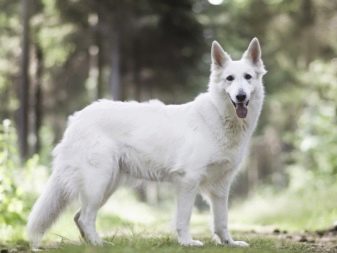


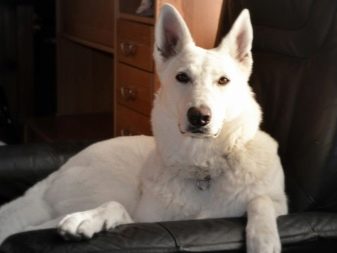
- Panda. This line demonstrates spontaneously appearing black spots in the form of a placer on the face. This line of "Germans" is an example of an autosomal heredity of a stable type based on a single gene. Dogs have excellent body composition and a stable psyche. Individuals have virtually no physiological deficiencies.
In this line, any colors except blue are allowed. However, all dog breeders who experiment with colors should remember that the standard does not provide for registration of accidentally appearing coat color.
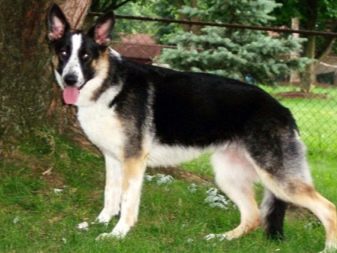
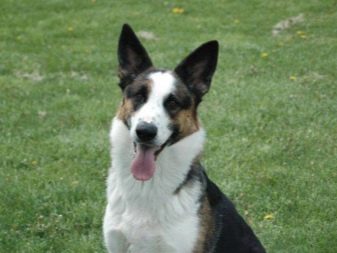
- Maskless shepherd dogs. They look like simple shepherds, only without a black mask. Some individuals may show points of light or dull color on the limbs, chest or muzzle. Also, spots can show themselves sable color or white patterns.
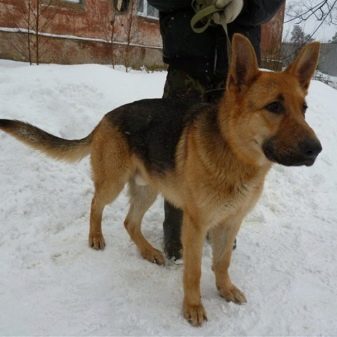

- Shilon Shepherd Dog. The development of the line took place in America, as increased interest began to show in exhibition individuals. In this line, they tried to revive the initial qualities of typical "Germans". To get a larger dog, the dog breeders combined the Alaskan Malamute with the Sharplan Shepherd. As a result of such an experiment, a dog was introduced, the height in the shoulders of which was 30 cm. The dog could not walk along the AKC line, but was recognized by the international registration system in Shilokha.
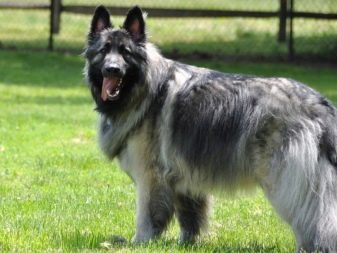
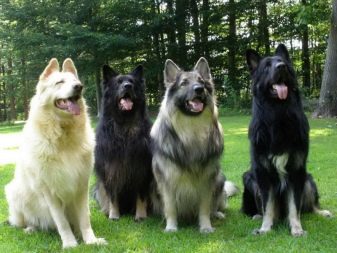
- Long-haired line. There is a recessive gene for long hair in each line and can show itself in the role of excessive shaggy, when compared with traditional hairline. In Germany, long hair will be a reason for disqualification. Due to such requirements for wool in central Europe, this line began to develop.They could not register such dogs, but they still use them in official dog breeding as shepherds and police officers.
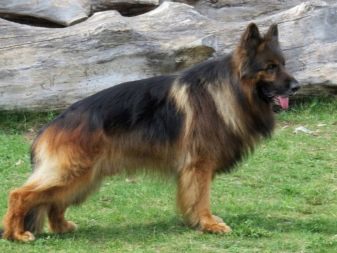
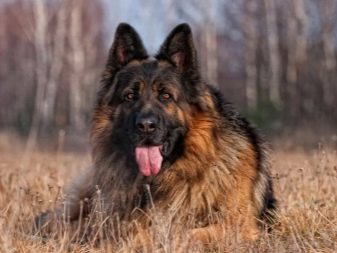
- Royal. This line is an example in which American dog handlers tried to get huge individuals with long hair. To get large dogs, malamute and akita along with other varieties were involved in the crossing. The breed standard recognized by ARBA provides for strong body folding along with large sizes. The animal is often used as a favorite of the whole family or a companion for walking. The temperament of individuals is soft and flexible, so they are not suitable for service.
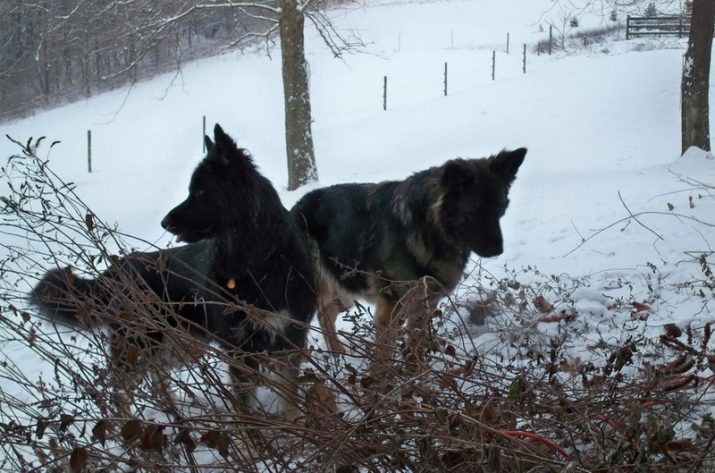
- Old type. The characteristic of this breed provides for a height of more than 30 cm at the withers and a weight exceeding 100 pounds. Also supposed flat flat back, mild temperament. Most representatives of this line are long-haired.
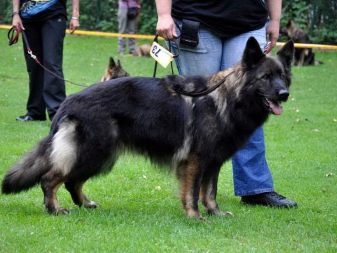
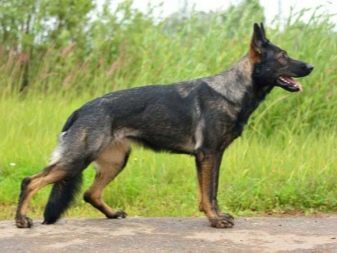
- Dwarf. Such a line is not a small copy of traditional "Germans", but just a genetic defect, which is called small-growing. Because of it, dogs can suffer from various health problems. Similar defects can occur in any dog breed, therefore, such animals are observed under strict veterinary control.

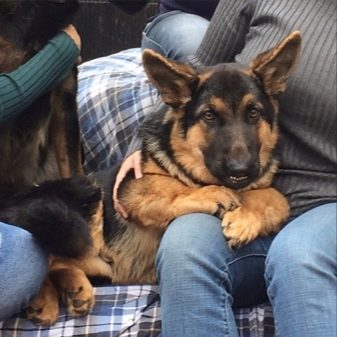
- Staronemetskaya. These are born shepherds who are very popular in Germany. Different colors and lengths of hairline are allowed.
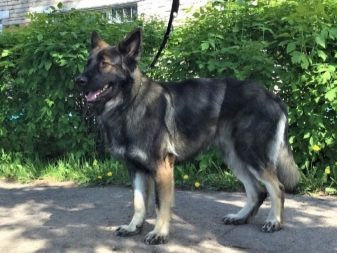
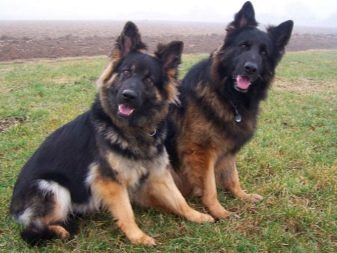
Character Features
"Germans" are considered the most highly intelligent and intelligent dogs. In the international ranking of dogs, they are in third place. If you approach the issue of training properly, you can get a pet that quickly grasps new skills and is able to cope with any task that for other breeds may seem impossible. Versatility is appreciated in service dog breeding. Thanks to a well-developed intuition, along with keen instinct and poise, such dogs are appreciated as guide dogs.
The high intelligence of this breed is not combined with the desire to be independent or stubborn. The German Shepherd enjoys playing various games, mastering exercises and getting to know new territories. The “German” does not like loneliness, but he is able to wait with patience for his owner. To make the dog feel good, she needs constant loads in the form of games and long walks. Also, such pets need human society.
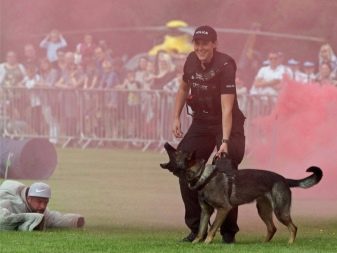
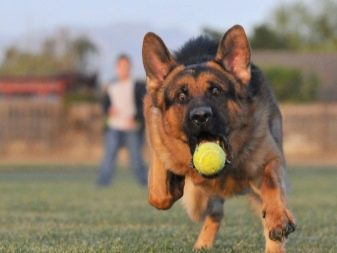
An innate protective instinct is one of the important features of this breed. For this reason, dogs are wary of strangers, but do not show an aggressive attitude. Loyalty to one's family is also a key characteristic. The animal is ready to sacrifice life in order to protect its master. It reacts to any manifestation of danger instantly and with adequacy.
Children for the "Germans" are friends, and they are happy to play with them. However, you should not leave the child alone with the dog, as the pet is not always able to assess its strength and dimensions. The German Shepherd will jealously guard the assigned possessions and property of its owner. As a bodyguard, these dogs showed themselves at a good level.
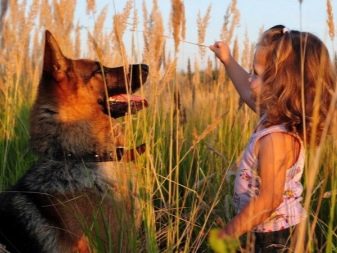

In order to obtain the necessary skills from the dog, it should be trained in OKD, after which it is possible to proceed to protective and guard duty.
Grudge is not inherent in shepherd dogs, so they are not able to do something in spite, even if they offend them badly. "German" is a sensitive, sincere and noble friend who will be a good companion. Some individuals may be stubborn and disobey their owner, but they will not do this in order to show their leadership.
Such dogs differ from nature by sociability and quickly cope with socialization. No one can say about the German Shepherd that she is "on her own mind." The logic of actions is always simple and affordable. For this reason from early childhood should be engaged in raising a dog in order to guarantee the prediction of the behavior of his four friend.
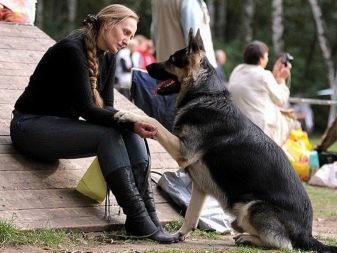
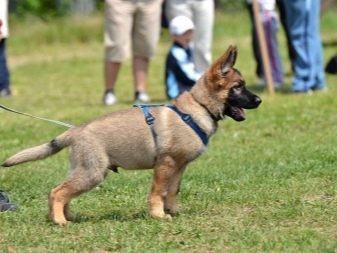
Sometimes a pet can be too nervous and aggressive towards strangers. The superbly developed instincts of the guard are a positive feature, but they should always be directed in the right direction. The dog must adequately respond to any circumstances, not rush to others. Many owners complain about the large amount of barking that comes from their pet. In order not to encounter such a problem, you need to deal with the issue of socialization and not delay it.
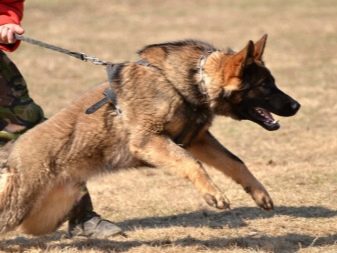
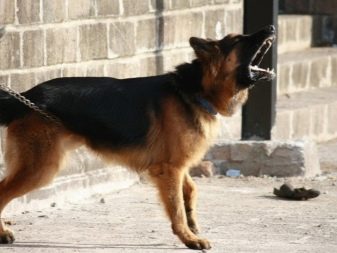
How to choose?
Puppies of a German shepherd are very cute and difficult to cope with emotions, choosing a fourth friend according to the rules, and not the dictates of the heart.
- First of all, you should decide what the dog is purchased for. Some people decide that they need a purebred individual with whom they will visit exhibitions, engage in breeding, but then abandon this undertaking. As a result, shepherds with a magnificent pedigree and a good exterior live their whole lives in an aviary, although they could bring many benefits.
- Some people, on the contrary, want to make a friend, but after the purchase they become interested in exhibitions. However, if the pet was chosen for the soul, it may not meet the requirements of the exterior and may not be suitable for participation in exhibitions. For this reason, you should decide on a decision in advance so as not to be disappointed.
- For shows it’s not enough to buy a puppy from a kennel with a good pedigree, you should study the history of breeding “Germans” and get acquainted with profitable pedigree lines. Each nursery has its own characteristics that you need to get acquainted with. In Russia there are a large number of nurseries where German shepherds are bred. They are found in different parts of the country, including in the territory of Altai and Siberia.
- Also, when choosing a puppy, you should familiarize yourself with the laws on breeding, according to which shepherds were required to undergo testing. Among the tests included kerung, which is a selection method. The nervous system is being studied along with the exterior and performance. You can ask the breeder for the results of this test in order to know information about the parents of the future puppy.
- Choosing a purebred dog is not an easy task. However, if you take a puppy without documents, you can encounter vices in the standard, temperament, and the animal may also have hereditary diseases.
- It is best to choose a pet aged from one and a half to three months. The puppy will already have time to grow up and will be able to quickly get used to the new situation. It is not recommended to purchase an adult animal, as addiction problems can occur.


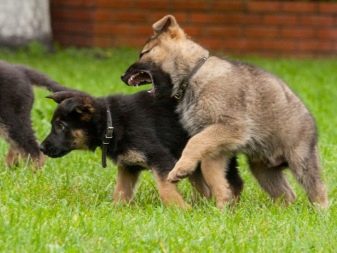
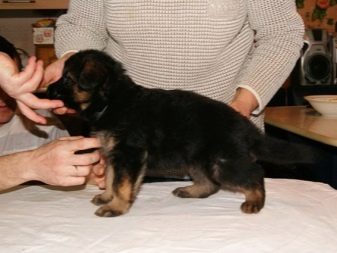
How to name?
"Germans" must be called correctly. The name for the pet should be selected in accordance with the size of the animal, its gender. Do not call the animal nicknames that are suitable for kids, it will look a bit ridiculous when the dog grows up. The name should be short, bright, because it is a signal for the dog. You can take as a basis the name indicated in the puppy card, use its shortened variation.
There are several rules for choosing a nickname for a dog:
- do not choose human names;
- it is undesirable to name a pet by the name of a deceased four-friend;
- by nickname it should be clear what gender the animal is.
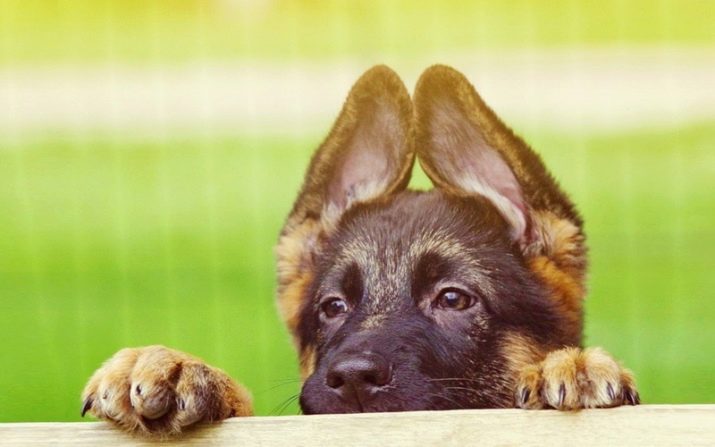
If you select a girl dog, you can use the following options for nicknames:
- Alpha;
- Ira;
- Alma
- Barefoot
- Bertha;
- Greta;
- Grace;
- Glory;
- Gita;
- Jesse
- Desi;
- Judy;
- Zara
- Ilda;
- Bark;
- Krista
- China;
- Lyme
- Leah
- Margo
- Myrtle;
- Mayla
- Nancy
- Oh yeah;
- Palm;
- Ritsa
- Cindy;
- Taiga;
- Tana
- Frida;
- Eyra;
- Emma;
- Utah;
- Yalta.
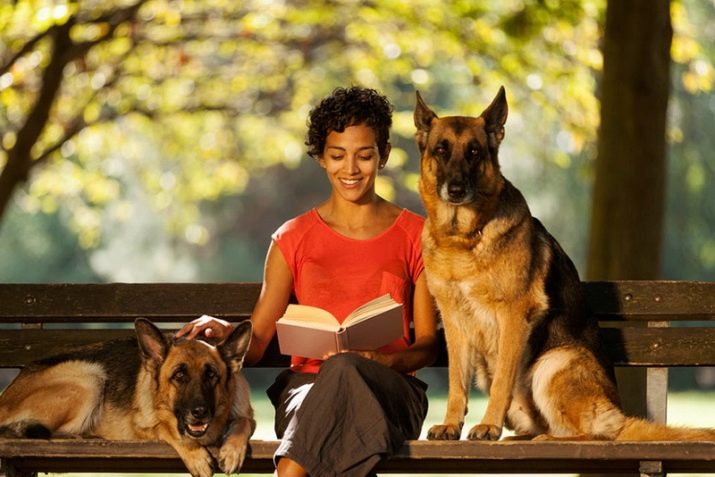
For the boy, you can choose the following options:
- Akbar;
- Ajax
- Ars;
- Boyard
- Baron
- Walter;
- Graph;
- Grant;
- Hex;
- Gray;
- Dax;
- Dick;
- Jack;
- Don;
- Dolph;
- Jean;
- Jacques;
- Zip;
- Zeus;
- Carat;
- Karai
- Colt;
- Coconut;
- Lord
- Suite
- Oscar;
- Pirate;
- Ron
- Ralph;
- Ram
- Rick
- Skye
- Tyson;
- Thor
- Phil;
- Felix;
- Caesar;
- Chuck
- Eric
- Yard.

Content Rules
Newborn puppies practically do not need anything except the presence of the mother and her milk. When the baby appears in the new house, you should take care of his safety and take some measures to prepare the home. This is due to the fact that puppies are very curious, active and can not only spoil furniture, but also harm themselves.
To avoid undesirable consequences, you will need to consider the following nuances.
- All furniture must be strong. Flimsy items are removed or hardened.
- Small toys from the field of view of the animal also need to be removed. In any case, the puppy will break them and may injure the esophagus if the fragment is accidentally swallowed.
- All things that the baby can reach should be removed.
- Sockets and wires must be hidden and protected.
- So that a small pet does not sharpen its teeth on unnecessary items, you should give him simulators, which can be purchased at any pet store. They are bones from a bull vein, ropes and balls. Several toys will distract the animal from expensive items.
- A slippery floor should be covered, as the puppy has weak legs that can be injured.
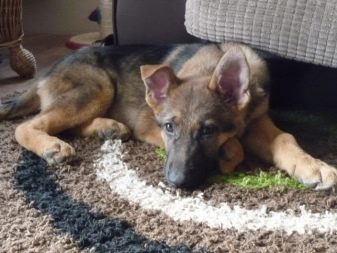
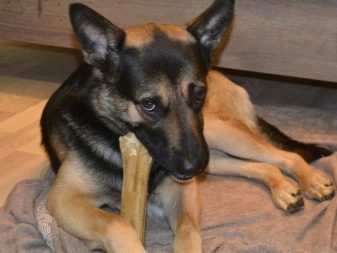
Due to its coat, the animal is able to live not only indoors, but also on the street. For street maintenance, an aviary will be required, in which there will be a warm booth. Walls must be protected from wind.
When the dog appears in the house, it should immediately have its own place. If the pet will live in the house, you must not allow him to sleep on the couch. Puppies grow quickly, and if a small lump on the couch looks cute, then not everyone will like a German shepherd, whose age is 5 months. For the sunbed, it is preferable to choose natural materials that are easy to clean. There should be no heating appliances near the place of the animal.
You can walk your pet on the street only after he gets vaccinated. Training for a leash begins with two months. This eliminates violence - the puppy should not be afraid of accessories.
In the future, a muzzle should be introduced into everyday life. When the pet turns 1 year old, it can be walked on a harness. This is not recommended before, since the backbone of the young dog has not yet formed.


What to feed?
The number of feeds depends on the age of the animal. Six-time feeding will be enough for a two-month-old puppy, it is recommended to feed up to four months 4 times a day, up to six months - 3 times. An older dog can eat twice a day.
Until the German Shepherd has reached 6 months, it is important to ensure that all the necessary nutritional components are present in her diet. Calcium must be present in food. This is due to the fact that at the age of 3-6 months, puppies grow very quickly, and already at the age of six months, a male dog can grow up to 55 cm at the withers (adult growth is 65 cm).
The diet of the "German" should consist of meat, offal, poultry. You can feed your pet boiled fish without bones. Rice, millet, oat or buckwheat cereals are allowed. You can add crackers. If fresh fruits are added, you should monitor the body's reaction to them.
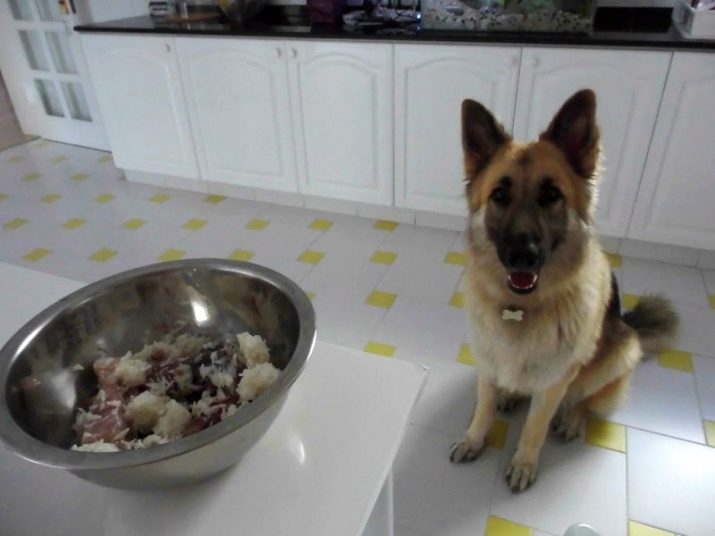
Many owners feed their pets dry food. Preference should be given to products of proven brands with the necessary set of all elements. There are specialized lines designed for German Shepherds. When feeding prepared feeds the dog should be provided with constant access to fresh water.

Macaroni, legumes, smoked food cannot be given to a dog. Also, you should not feed your pet sweets, pickles, too hot or cold food. Sharp animals are also not allowed.
How to care?
As for the basic rules of care, they look as follows:
- the shepherd needs to be combed out, like any other breed;
- as the animal is contaminated, the animal should be bathed, the procedure is carried out using special shampoo for washing dogs;
- ears and eyes should be examined regularly;
- if the claws do not grind on their own and cause discomfort to the pet, it is recommended to trim them;
- preventive examination by a veterinarian should be carried out at least twice a year.
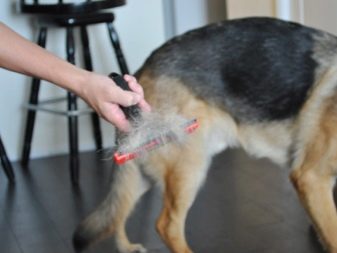


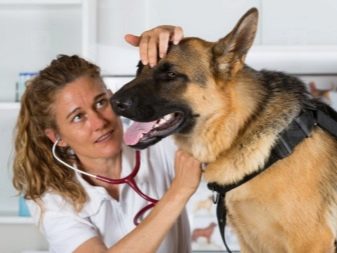
How to educate?
Despite the fact that German shepherds are considered very intelligent animals, they must be brought up and trained. The process of parenting should begin on the first day of the pet’s life in the house. You can entice your kid with a playful form of learning and goodies as an encouragement.
The owner must show the dog that he is the head of the family. In this case, you can not go to the cry and beat the animal. If the dog has significant behavioral deficiencies, and the owner does not know how to fix this, you should contact a dog handler. The animal must go through OKD and know the elementary commands: “to me”, “sit”, “lie”, “walk”, “place”, “fu”, “aport”. Also the pet must Do not care about food that is lying on the street.
When the dog’s skeleton becomes stronger, you can deal with overcoming obstacles. You should always remember that psychological maturity is reached quite late - in three years.
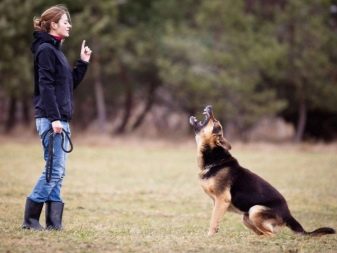

Even a young individual, which in its external parameters is no different from an adult dog, is a vulnerable puppy at heart, who cares and encourages its owner.
Reviews
Owner reviews in most cases are positive. Almost everyone who sees a German shepherd falls in love with her. These are beautiful dogs, whose energy and strength delight and always attract attention. They are active and cheerful.
The owners of the "Germans" report that the dogs literally grab all the teams on the fly and gladly carry them out. The pet is in a good mood and shows readiness for any movements. He is ready to walk with a man for hours and will be happy to bring him a wand and run on bike rides.

Other people talk about great security features. Dogs selflessly guard the territory and never let a stranger pass. Moreover, on the street they do not show aggression towards people and other animals.
The German shepherd gets along well with the child and will play with him. You do not have to worry that the animal will rush at the baby or harm him. For other pets, the "German" also shows patience and loyalty. If we talk about negative aspects, then this is an extra bark, which is often associated with the fact that the animal is alone for a long time or has received insufficient education.
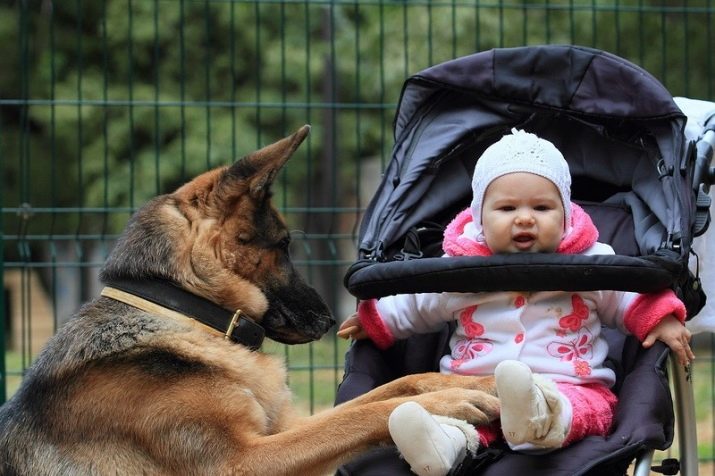
See the next video for facts about the German Shepherd.
